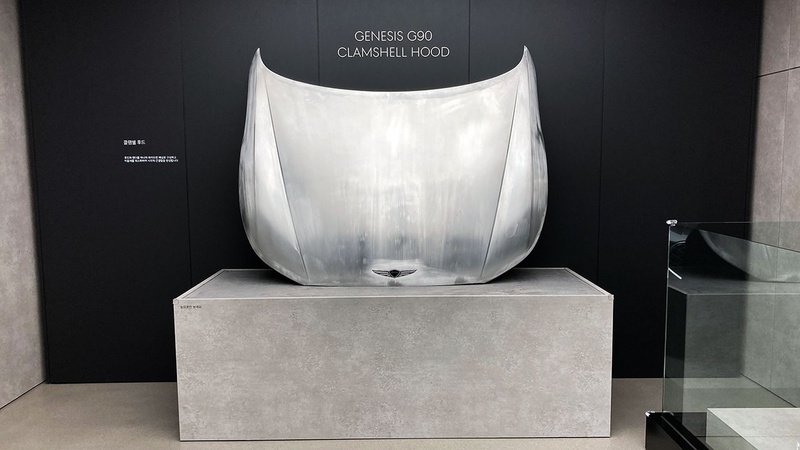We must note that the Genesis' unofficial record stands among current production models, as past models such as the original Dodge Viper likely had a larger hood, which was also notoriously expensive to replace. In any case, the aluminum hood of the Genesis G90 covers an area of 2.6 square meters (4,030 square inches), which is the equivalent of 45 pieces of A4 paper.
The clamshell hood extends from the grille to the base of the windshield and front doors, as it incorporates the upper portion of the front fenders (hence the clamshell definition). The designers' goal was to eliminate panel gaps and create a cleaner look for the front end of their flagship.


Genesis G90 clamshell hood
Genesis admits that the size of this aluminum component presented many challenges during the development process. Engineers found that the hood's dimensions could change due to thermal deformation after the oven painting process, which could result in larger panel gaps. To avoid this, they strengthened the hinges and added a C-shaped outer hood rail to improve structural rigidity. All of these changes required a "significant investment in high-level hood molding and forming technology," but Genesis officials were convinced it was justified for the cause.


Genesis G90
Luc Donckerwolke, Chief Creative Officer of Genesis, said: “In a world of uninspired sedans, the design of the G90 resets the standards. Genesis Design has created the most attractive attire by giving it the proportions of an elegant and athletic Gran Turismo. It is complemented by technological differentiators like the aluminum clamshell bonnet and the thinnest quad lamps sporting Micro Lens Array technology.”
In addition to North America and its home market of Korea, the Genesis G90 is currently available in Germany and Switzerland.
Source: Genesis

